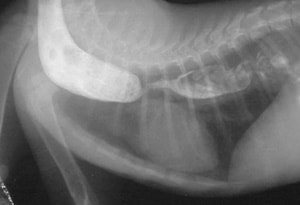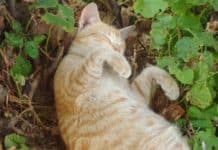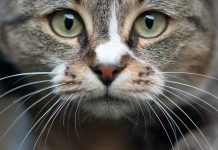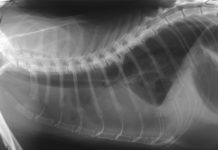The tabular organ or esophagus, which may run from the throat through the stomach. One condition, which affects the esophagus of cats is the esophageal stricture. This is the abnormal narrowing of the esophagus’ internal open space. There is no apparent genetic factor that is in connection to this condition. Also, it may happen in cats of any age. In this article, we will discuss some more interesting facts about esophageal stricture in cats including its causes, symptoms, prognosis, and treatment. Read on to learn these and many more!
What is Esophageal Stricture in Cats?

We know that the esophagus sis the narrow tube, which connects the mouth into the stomach. This is the start of the digestive system. In the event that the lining of the esophagus start to become inflamed, the condition known as esophagitis may instigate. Further, this might make drinking and eating so difficult and so painful. When you leave the condition without any treatment, it may lead to a more austere malady, which is the esophageal stricture, which needs internal intervention.
Moreover, esophageal stricture is the narrowing of the opening of the esophagus, which may prevent the esophagus from opening its pathway when drink or food is being passed into it. Further, it is mainly because of gastroesophageal acid reflux –a foreign object, which becomes lodged into the esophagus or the abnormal healing after a surgical operation.
However, it may also be hereditary because of physical irregularity. It may happen as a secondary illness after a latest surgery, which involve anesthesia. Nonetheless, it is commonly highly curable when caught on its early stage. This may affect whatever cat breed there is or even the age. Nevertheless, the malady is relatively rare.
Causes
There are actually two major causes of the esophageal stricture:
Gastroesophageal Conditions
The conditions like gastroesophageal acid reflux because of delayed gastric emptying, tumors that involve gastroesophageal system, hiatal hernia, as well as esophagitis may lead to esophageal structure.
Trauma
The trauma obtained from ingesting objects like bone, button battery, food, hairball, or a toy stuck in the esophagus or swallowing whatever caustic substance there is or particular acidic drugs, may cause the narrowing of the esophagus of the cat.
Other Causes
Some other causes of esophageal stricture in cats include the following:
- Diverticula or dilated pockets on the esophageal wall,
- Vascular ring abnormality,
- Megaesophagus,
- Radiation injury,
- Thermal injury obtained from eating overheated food,
- Calcivirus infection,
- Congenital irregularities, as well as
- Mechanical trauma because of the improper placement of the feeding tube or the administration of general anesthesia from preceding esophageal surgery.
Symptoms
The symptoms might not be apparent when the condition is in its mild state. Nevertheless, if the symptoms get worse, you need to watch out for any possible happenings. These are some of the most common symptoms of esophageal stricture:
- Depression,
- Labored breathing,
- Fever,
- Lethargy,
- Cold-like symptoms like coughing or runny nose,
- Drooling,
- Drastic change in the common appetite,
- Weight loss,
- Retching or gagging,
- Spontaneous gulping motions with the neck and head,
- Crying out or pain when swallowing, as well as
- Regurgitation or vomiting for about 1-4 weeks after the esophageal surgery.
Prognosis

The vet may want to rule out a lot of other possible conditions or diseases, which may cause the symptoms above. For instance, if the cat has just deterred, an irregularity known as vascular ring incongruity might be the issue. To be able to arrive at a precise prognosis, the vet might conduct a barium-contrast x-ray that may use a radiopaque fluid into the esophageal passage, hence that particular liquid passage may appear on the x-ray image, showing irregularities in the passage.
Additionally, an x-ray might also reveal a foreign object that’s caught in the esophagus. Further, a visual diagnostic tool that can be inserted in the esophagus -this is called endoscope. It may also be essential for examining the esophagus visually and in a much closer detail. Moreover, the veterinarian may also look for masses, tumors.
Treatment for Esophageal Stricture in Cats
The cat might be kept in a clinic initially. Once the hydration needs are already addressed and the affected part of the esophagus is already dilated, you can take the cat home already. Furthermore, if the cat has aspiration pneumonia and esophageal inflammation, it might need to stay under medical supervision much longer.
In addition, the intravenous fluids might be necessary as well for correcting the hydration status. The medications might be given through injection via the dilation procedures, in order to facilitate the healing. Further, oxygen might be important as well for patients that has austere aspiration pneumonia.
Furthermore, cats, which have austere inflammation on the esophagus; as well as those that have experience on dilation procedures might not be able to take food via their mouth. Additionally, transitory feeding tube might be put at the dilation procedure as a way of providing recurrent nutritional support. Also, the veterinarian may also advise you the foods that you can safely feed your cat. This is to help it in the recovery process.









